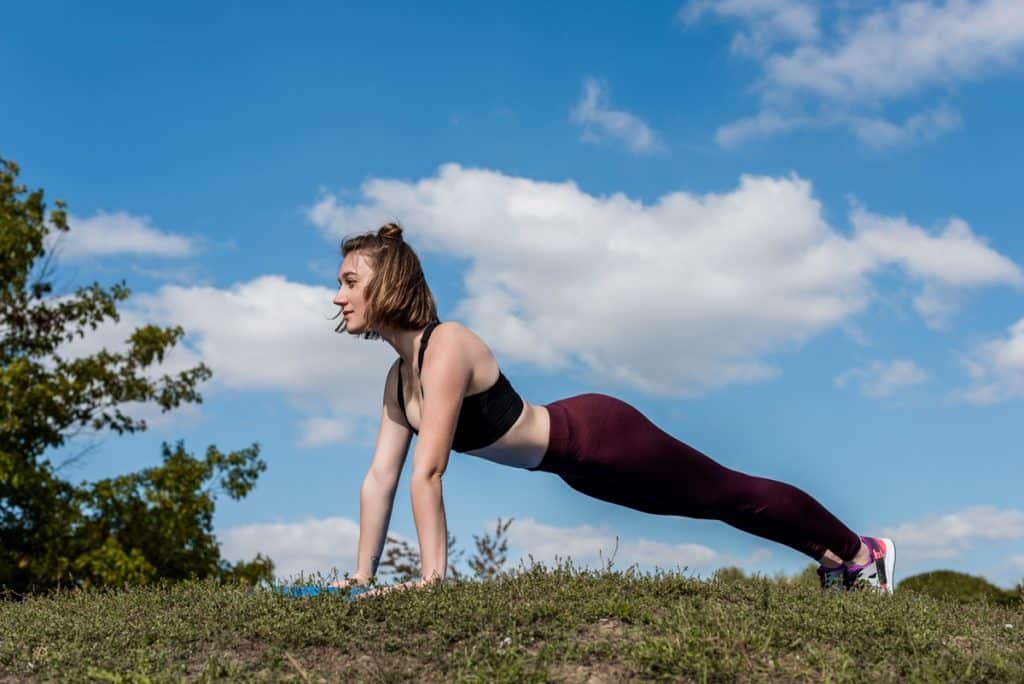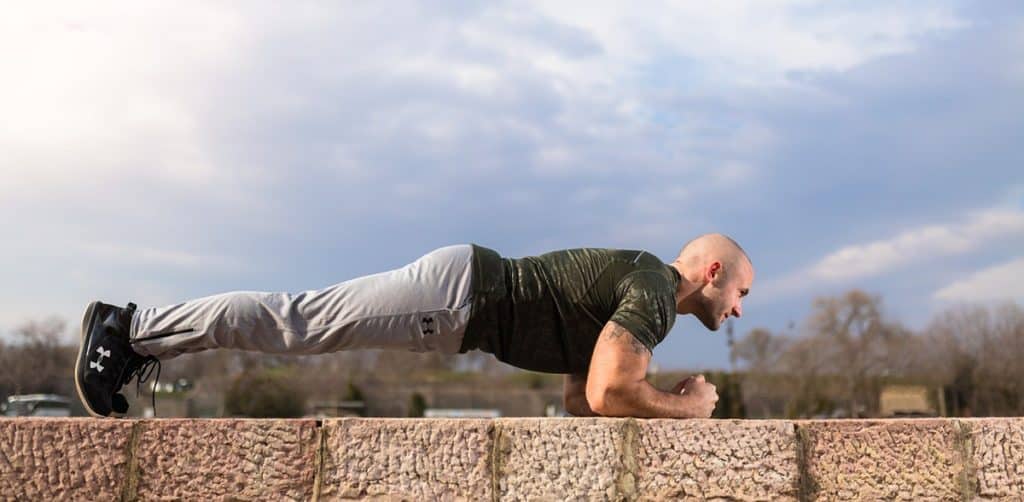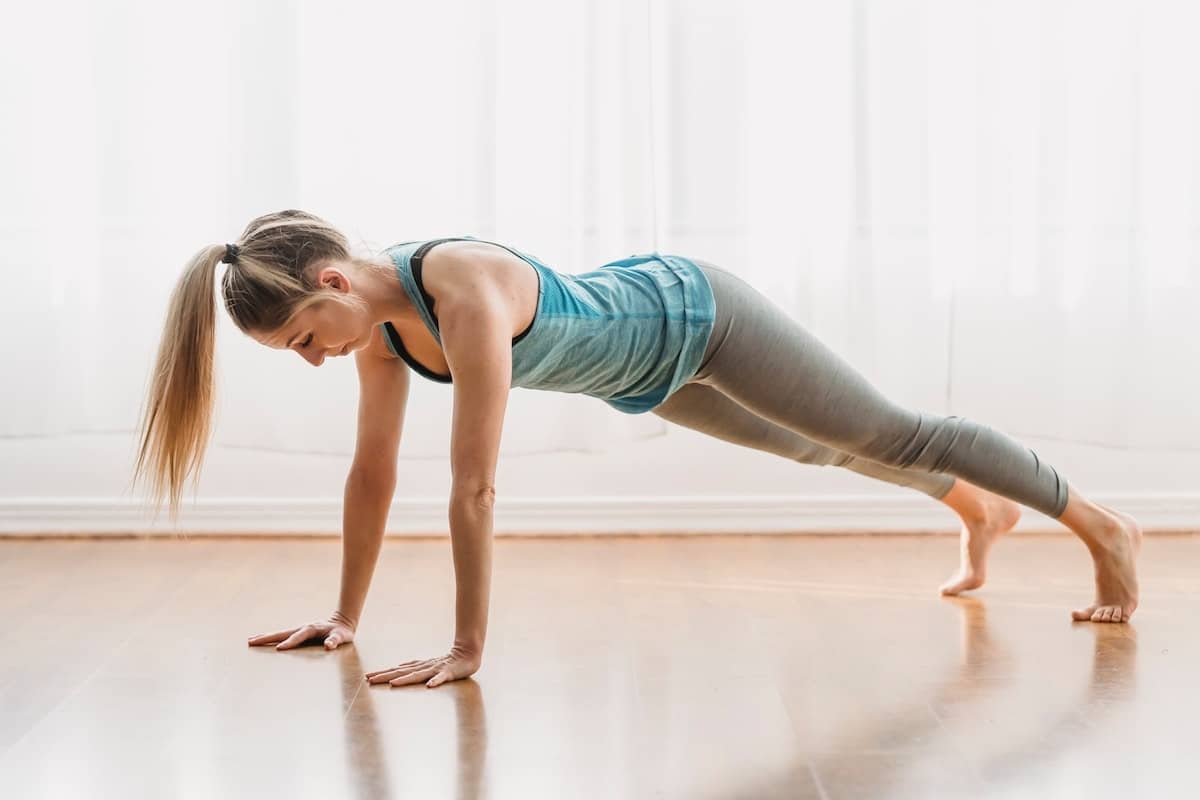Plank exercises and push-ups are two staple components in fitness routines, lauded for their simplicity and effectiveness in core strengthening. They engage multiple muscle groups, boost metabolism, and significantly enhance physical strength and endurance. But how do they compare? Specifically, 1 minute plank is equivalent to how many push-ups? This article will dissect these exercises, shedding light on why planks are popular, and share some tips for optimizing these workouts for the best results.
What are Plank Exercises?
Plank exercises are a type of bodyweight exercise that works to strengthen the core, along with other muscles in the body. The classic plank exercise involves maintaining a position similar to a push-up, for the maximum possible time. The aim of this exercise is to use your body weight to put pressure on the abdomen and build strength in this area.
There are several variations of plank exercises, each targeting different muscle groups. Here are a few examples:
- Classic Plank (or Forearm Plank): Get into a push-up position, but rest your weight on your forearms instead of your hands. Your elbows should be directly under your shoulders. Your body should form a straight line from your head to your feet. Keep your core engaged and hold this position for a period of time.
- Straight Arm Plank: Similar to the Classic Plank but with arms fully extended and palms flat on the floor. It targets not only the core but also the shoulders.
- Side Plank: From the plank position, transfer your weight onto one forearm. Rotate your body so that you’re sideways, facing either to the left or right, and stack your feet one on top of the other. Raise your other arm towards the sky. This variation targets the obliques.
- Reverse Plank: Sit on the ground, legs extended in front of you. Place your hands on the floor behind you, fingers pointing towards your feet. Push up until your body forms a straight line from your head to your heels. It targets the core, lower back, and hamstrings.
- Walking Plank: Start in a high plank position. Lower your right arm down so that the forearm is on the ground, then do the same with your left arm, coming into an elbow plank. Put your right hand on the ground, then your left hand, pushing back up to a high plank.
Plank exercises are effective and versatile since they require no equipment, very little space, and can be modified to suit beginner, intermediate, and advanced fitness levels. Always remember to keep your body aligned and your core engaged when doing these exercises to avoid back pain and ensure effectiveness. Also, proper breathing, in sync with the movements, is important during these exercises.

Why are Plank Exercises So Popular?
Planks have soared in popularity due to their efficiency in working multiple muscle groups simultaneously. They’re easily modifiable to any fitness level and can be performed virtually anywhere, with no equipment required. Plank exercises are popular for several reasons:
- Total Body Workout: While planks are often associated with core workouts, they actually work several muscle groups beyond just your abdominals. Depending on the variation, planks can target your shoulders, arms, back, glutes, and legs.
- No Equipment Required: Planks are bodyweight exercises that don’t require any equipment, making them easy to incorporate into any workout routine, whether you’re at home, in a park, or at a gym.
- Adaptable for Different Fitness Levels: Planks can be modified to accommodate different fitness levels. Beginners can start with simpler versions (like knee planks or incline planks), while more advanced individuals can try harder variations or increase the time they hold the plank.
- Improve Posture and Balance: Regularly performing planks can help improve posture and balance, as they strengthen the core muscles that maintain body stability.
- Functional Fitness: The strength and stability developed by doing planks have practical applications in everyday life and in performing other physical activities. This makes planks an excellent component of functional fitness routines.
- Measure Progress: Planks are a great way to measure your progress over time. As you get stronger, you’ll be able to hold the plank for longer periods, or move on to more challenging variations.
- Safe and Effective: When done correctly, planks are a safe way to build strength. They put less pressure on the spine and hips compared to other exercises like crunches, squats, or sit-ups, while still delivering results.
Planks versus Push-ups: The Comparison
Equating planks and push-ups directly is challenging because they focus on different aspects of fitness. Planks are a static exercise targeting core stability, while push-ups are dynamic, focusing on upper body strength. Generally, a 1-minute plank can be seen as equivalent to performing 10-20 push-ups, due to the length of time that the core is engaged during these exercises.
Muscle Engagement
- Planks: Primarily target the core muscles, including the transverse and rectus abdominis, and the obliques. However, they also work the muscles in your shoulders, chest, back, glutes, and legs to a lesser degree, depending on the variation.
- Push-ups: Primarily target the chest, triceps, and shoulders. They also engage the core, quads, and lower back, but these muscles are secondary to the upper body muscles being worked.
Intensity and Movement
- Planks: This is an isometric exercise, meaning it involves holding a position for a period of time rather than moving through a range of motion. This can be less intense than dynamic exercises like push-ups, but still challenging, especially as you increase the duration of the hold.
- Push-ups: These are a dynamic exercise, involving a range of motion and repeated movement. They can be more intense than planks, particularly for the upper body muscles.

Difficulty and Progression
- Planks: These can be easily modified to accommodate different fitness levels. Beginners can start with knee planks or incline planks, while more advanced individuals can try harder variations or increase their hold time.
- Push-ups: These can also be adapted for different fitness levels, but they can be more challenging for beginners, particularly if upper body strength is lacking. Modifications can include knee push-ups or wall push-ups for beginners, or more challenging variations like decline push-ups or one-arm push-ups for advanced individuals.
Functional Fitness
- Planks: Because they work the core so effectively, planks can contribute to improved posture and balance, and can help with everyday activities that require core stability.
- Push-ups: By strengthening the chest, shoulders, and arms, push-ups can help with everyday tasks that require pushing or lifting.
Tips for Optimal Results
- Proper Form: Maintain correct form to avoid injury and ensure the effectiveness of the exercise. For planks, keep your body in a straight line, squeeze your glutes, and tuck your chin in. For push-ups, ensure your body is linear, and don’t let your lower back sag.
- Consistency: Make these exercises a regular part of your fitness routine for the best results. Start with shorter planks or fewer push-ups and gradually increase as your strength and endurance improve.
- Variety: Add variations to these exercises to challenge different muscle groups. For planks, try side planks or reverse planks. For push-ups, consider trying wide-grip, close-grip, or decline push-ups.
Conclusion
While it’s difficult to equate a dynamic exercise like push-ups directly with a static one like planks, both exercises are invaluable in any workout regimen. They offer unique benefits, from improving core strength and stability to enhancing upper body muscular endurance. By focusing on maintaining correct form, staying consistent, and adding variations, you’ll optimize your results and make significant strides in your fitness journey.


















